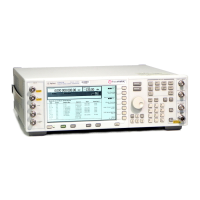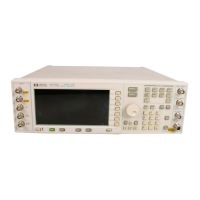Chapter 3 79
Basic Operation
Using Security Functions
Erase All
CAUTION Do not use this function with signal generator firmware revisions C.04.84, C.04.86, or
C.04.95. If you have one of these revisions installed, please upgrade immediately to revision
C.04.96 or later.
This function removes all user files, user flatness calibrations, user I/Q calibrations, and resets all table
editors with original factory values, ensuring that user data and configurations are not accessible or
viewable. The instrument appears as if it is in its original factory state, however, the memory is not sanitized.
This action is relatively quick, taking less than one minute (the exact time depends on the number of files).
To carry out this function, press
Utility > Memory Catalog > More (1 of 2) > Security > Erase All > Confirm Erase.
NOTE This function is different than pressing Utility > Memory Catalog > More (1 of 2) >
Delete All Files, which deletes all user files, but does not reset the table editors.
Erase and Overwrite All
CAUTION Do not use this function with signal generator firmware revisions C.04.84, C.04.86, or
C.04.95. If you have one of these revisions installed, please upgrade immediately to revision
C.04.96 or later.
This function performs the same actions as Erase All and then clears and overwrites the various memory
types in accordance with Department of Defense (DoD) standards, as described below.
To carry out this function, press
Utility > Memory Catalog > More (1 of 2) > Security > EraseandOverwriteAll >
Confirm Overwrite.
SRAM All addressable locations are overwritten with random characters.
CPU Flash All addressable locations are overwritten with random characters and then the flash blocks are erased.
This accomplishes the same purpose of a chip erase, however, only the areas that are no longer in use are
erased and the factory calibration files are left intact. System files are restored after erase.
DRAM All addressable locations are overwritten with random characters.
Hard Disk All addressable locations are overwritten with a single character. (This is insufficient for top secret data,
according to DoD standards. For top secret data, the hard drive must be removed and destroyed.)

